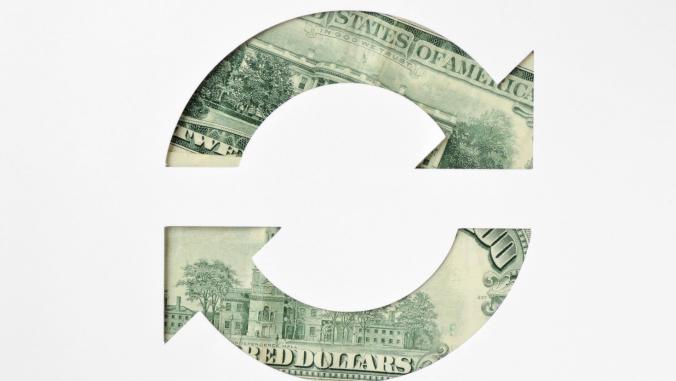Carbon pricing is becoming the norm for big companies
Some firms are taking it more seriously than others, CDP reports, but the overall trend is unmistakable.

The number of companies using internal carbon pricing to assess and control the carbon impact of their operations has jumped eightfold in the last four years, according to new research from CDP, driven by the rollout of carbon trading schemes in states and countries around the world.
The investor-backed group said more than 1,300 companies are using internal carbon pricing or planning to introduce such a scheme in the next two years, including more than 100 Fortune 500 companies with collective annual revenues of around $7 trillion. CDP, which requests climate-related information from listed firms on behalf of investors, said the number of companies using internal carbon pricing approaches has risen almost tenfold from just 150 firms in 2014.
The rise in numbers is a sign policies such as the EU Emissions Trading System (EU ETS) are starting to impact policies in the corporate world, according to Nicolette Bartlett, CDP's director of carbon pricing.
"It's now become more the norm for corporates in certain sectors to have an internal carbon price that they factor into business planning," she told BusinessGreen, adding that while many companies embracing carbon pricing are multinationals who may well be responding to emission trading legislation, others are firms adopting the practice voluntarily to better prepare for a low-carbon economy.
"There are a growing group of companies that are doing this voluntarily," she explained. "That's because they get impacted indirectly through their Scope 2 emissions of energy use which may be affected by the price, and also because they have noted that this is a useful behaviour change mechanism. You can see this in the telecommunications industry — companies where they are very high energy users, and that's only going to grow as our world becomes more smart. And so they are aware of this and to mitigate through the transition risks they may have in the future they are actually triggering those changes now and they are doing that by implementing a carbon price internally."
But while the use of internal carbon prices may be becoming more common, there are still wide disparities over how effectively they are being deployed, she warned. "Because companies are internalizing doesn't necessarily mean that big changes are being made in investment decisions," she said. "One doesn't necessarily track across to the other."
Some of the most "astute" companies use internal systems to ensure the cost of a carbon price is used to make sure all of a firm's activities align with a long-term vision for decarbonization, Bartlett said. Best practice approaches see firms include assumptions to raise the price over time, apply it to emissions across the value chain, and embed it within operational as well as capital spend.
Information is crucial for investors looking to minimise their exposure to climate-related risks, CDP argued. "Investors need to find out how much of this is being embedded deeper [into a company's activity], how much of an influence it has on corporate decisions, and whether the assumptions companies are making around the markets themselves are realistic and how markets may grow in the future," Bartlett said. "We need to see more evidence of this actually shifting investments in a significant way."
However, the quality of information on carbon pricing that is available for investors to access is limited. For example, just 15 percent of firms using a carbon price disclose their assumptions of future price increases. According to the CDP data, the remainder either assume a static price or don't disclose their future plans. Meanwhile, "very few" companies provide pricing assumptions beyond 2025, despite such information being valuable to investors considering backing the deployment of long-term assets.
However, things might be about to change. Earlier this year, the Task Force on Climate-Related Financial Disclosures (TCFD) set out a set of voluntary guidelines for firms to disclose climate risk information to investors, including detailing the carbon price they use internally.
Already 10 firms, including high profile names such as Philips Lighting, Marks & Spencer and Iberdrola, have said they will implement the guidelines in full. As investor pressure grows, many more companies are expected to follow suit.
Meanwhile, China is set to launch the world's largest emissions trading system later this year, a move which is expected to further boost the growing numbers of Asian companies factoring an internal carbon price into their activities.
Larger emissions trading markets and more companies using internal carbon prices almost certainly will help drive low-carbon progress and corporate decarbonization efforts. But, as CDP warned, investors still will need accurate information to unpack how influential carbon prices are in shaping business decision making.
This story first appeared on:





